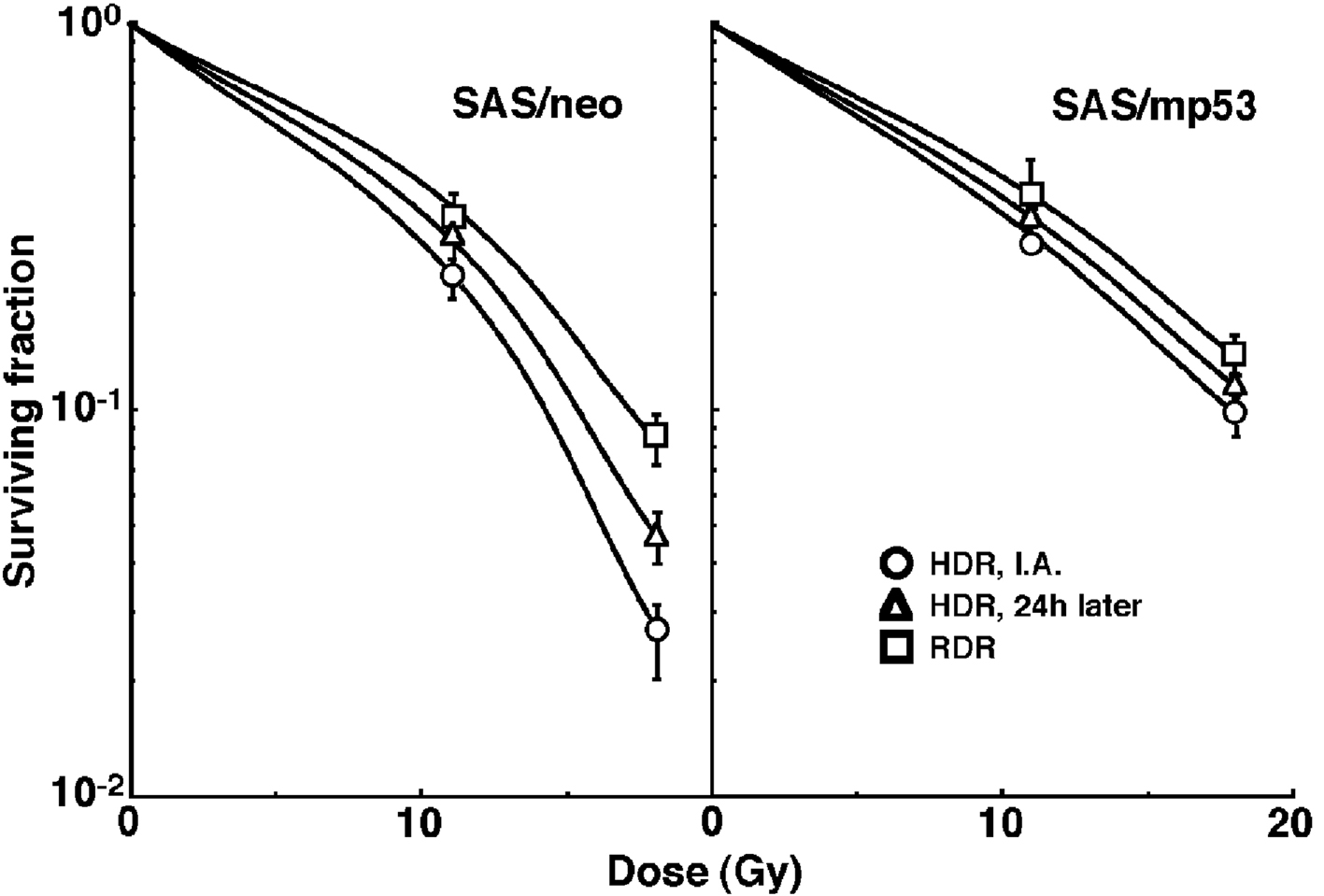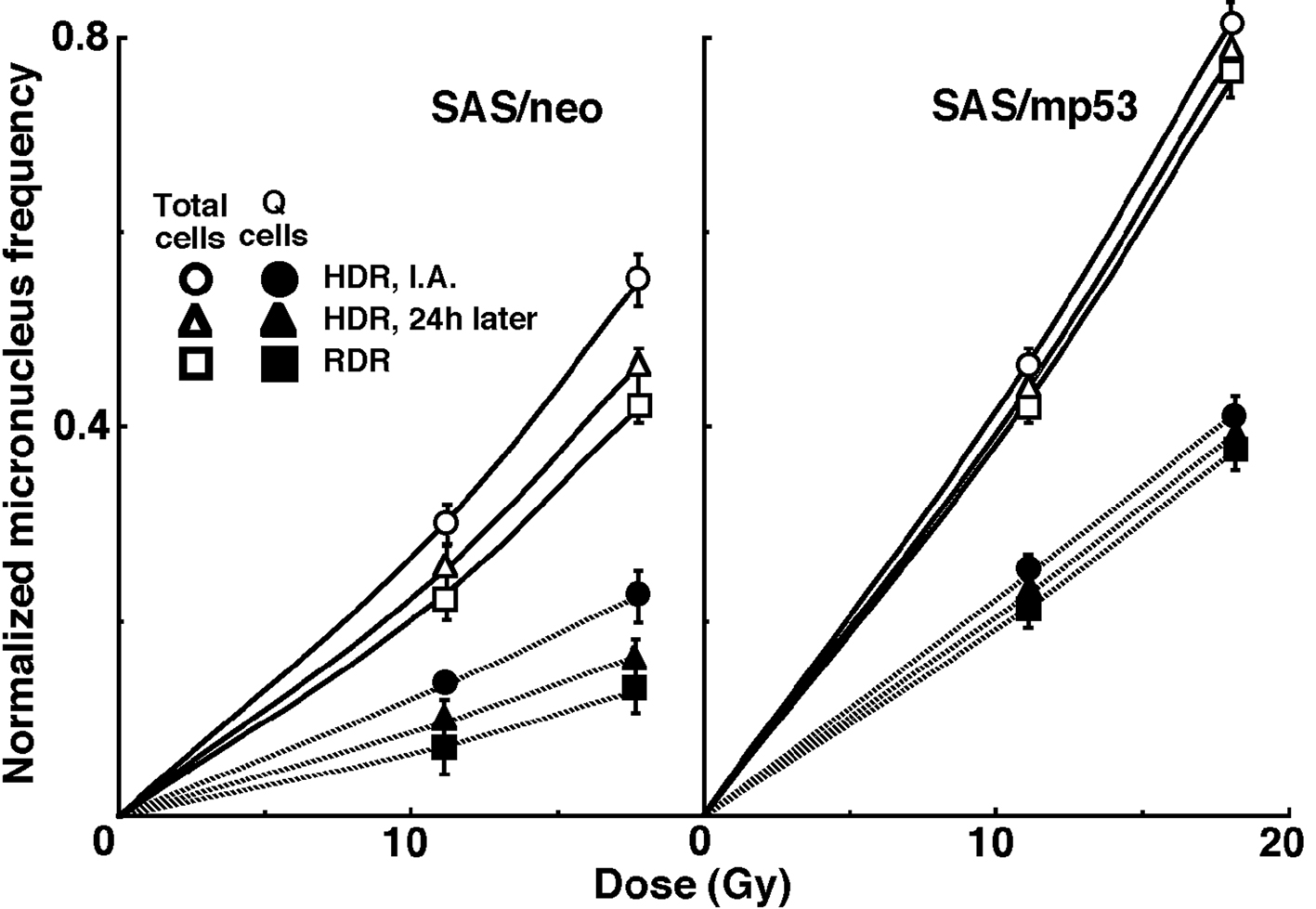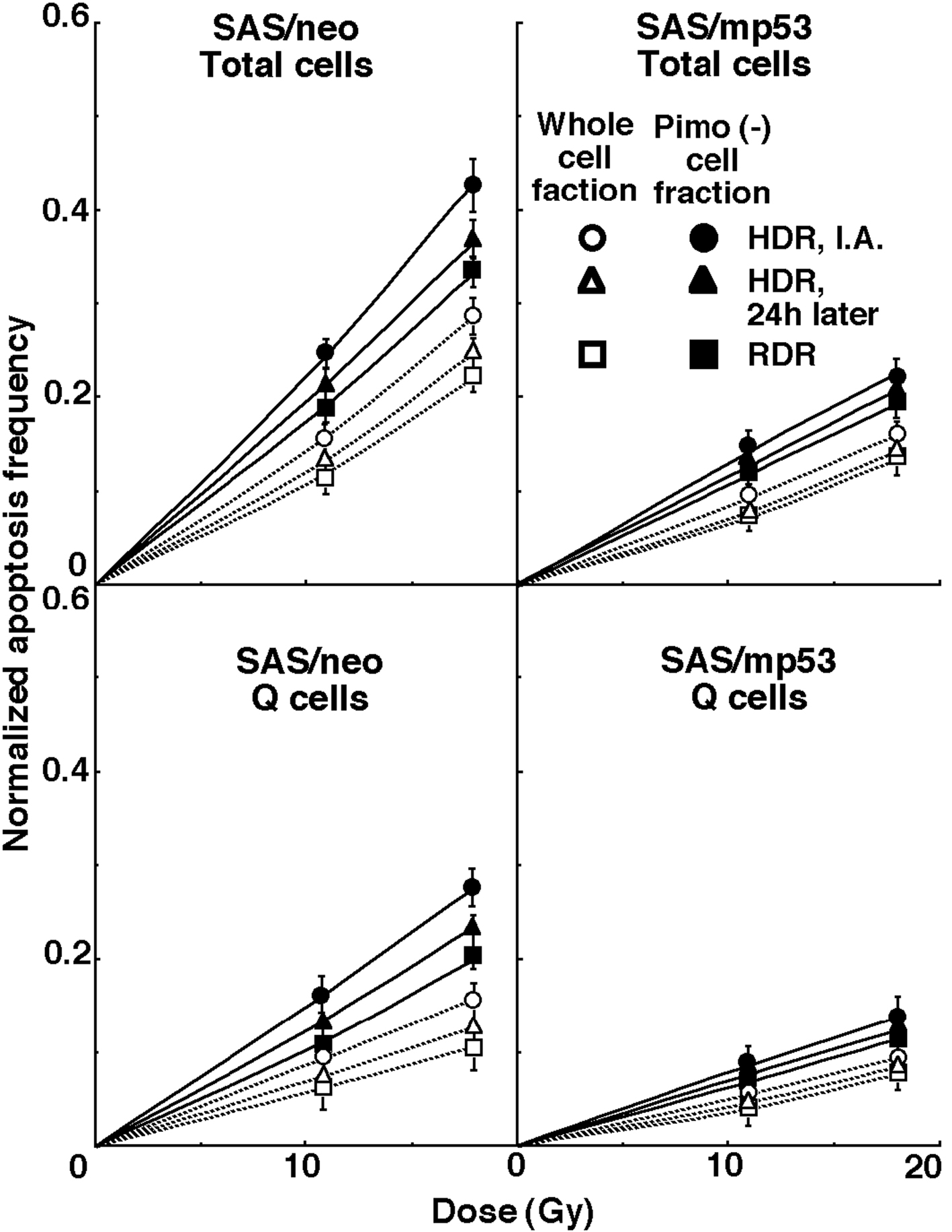
Figure 1. Cell survival curves for the whole tumor cell fraction in the total tumor cell population of SAS/neo (left panel) and SAS/mp53 (right panel) tumors as a function of radiation dose. Circles, triangles and squares represent the surviving fractions immediately after (I.A.), at 24 h after (24h later) high dose-rate (HDR), and reduced dose-rate (RDR) γ-ray irradiation, respectively. Bars represent standard errors.

Figure 2. Dose response curves of the normalized micronucleus frequency for the whole tumor cell fraction in the total and quiescent (Q) tumor cell populations of SAS/neo (left panel) and SAS/mp53 (right panel) tumors as a function of radiation dose. Open and solid symbols represent the normalized micronucleus frequencies for total and quiescent tumor cell populations, respectively. Circles, triangles and squares represent the normalized micronucleus frequency immediately after (I.A.), at 24 h after (24h later) high dose-rate (HDR), and reduced dose-rate (RDR) γ-ray irradiation, respectively. Bars represent standard errors.

Figure 3. Dose response curves for the normalized apoptosis frequency of the total and quiescent (Q) tumor cell populations of SAS/neo (left panel) and SAS/mp53 (right panel) tumors as a function of radiation dose are shown in the upper and lower panels, respectively. Open and solid symbols represent the normalized apoptosis frequencies for the whole tumor cell fraction and the cell fraction not labeled with pimonidazole (Pimo (-)) in both the total and Q tumor cell populations, respectively. Circles, triangles and squares represent the normalized apoptosis frequency immediately after (I.A.), at 24 h after (24h later) high dose-rate (HDR), and reduced dose-rate (RDR) γ-ray irradiation, respectively. Bars represent standard errors.


